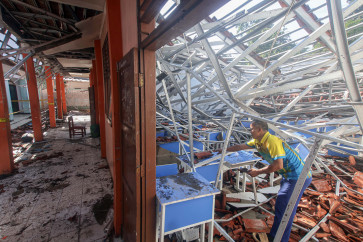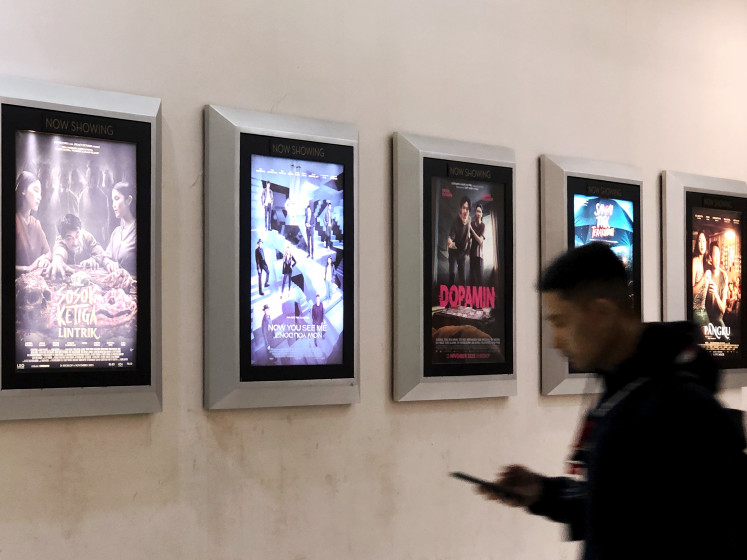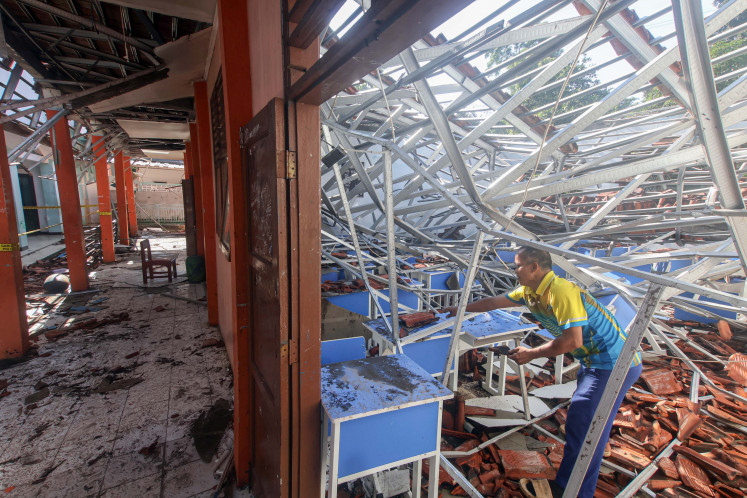Popular Reads
Top Results
Can't find what you're looking for?
View all search resultsPopular Reads
Top Results
Can't find what you're looking for?
View all search resultsChildren and youths as climate guardians
Could children and youths play a role as the guardians of our planet? Who should give an answer to such a question? Could we ask the children themselves? We believe that adults are often inflexible in changing their mindsets when it comes to caring about nature
Change text size
Gift Premium Articles
to Anyone
C
ould children and youths play a role as the guardians of our planet? Who should give an answer to such a question? Could we ask the children themselves?
We believe that adults are often inflexible in changing their mindsets when it comes to caring about nature. Most adults today used to be children, whose minds have since been fabricated according to certain ecological values that have turned out to be harmful to nature.
Three years ago, we conducted a study in Sikka, East Nusa Tenggara (NTT) and in Garut, West Java, where we were hosted by Plan International. We asked children, youths and adults (especially parents) one simple question: “What can boys and girls do to reduce the risks of climate change?”
The answers varied. Perhaps most unsurprising were the responses of adults, who tended to take the view that children were too small to deal with the risks that nature presents. In addition, boys were seen as being stronger and more able to deal with these disaster risks when compared with girls (see Haynes, Lassa and Tower 2010, Children in a Changing Climate, Working Paper #2, published by the Institute of Development Studies, UK).
In the eyes of specialists, policy makers have often been blind to the fact that, regardless of their gender, children can have potential roles to play in dealing with climate change and disaster risks. The issue here is not simply a static view of children as children, but the need to have a critical vision concerning certain temporal dynamics.
Today’s children are the adults of the future who must internalize noble reasons to take care of their grandchildren’s children. Ignorance or carelessness toward Mother Nature must start somewhere during their childhood, so the earlier that the children can take firm positions in regards to caring about nature, the better the future of our planet will be.
From our studies in the field in Sikka in 2008, there was a group of children who argued that they had the power to decide which trees were to be cut down when collecting firewood from a nearby forest. The children suggested a selective cutting process, which helped explain why children in remote areas had “beautiful minds” in respect of guarding the planet.
For the youths (senior high school students) who took geography at schools, they had a good understanding that the uncontrolled cutting down of trees could give rise to local natural hazards, such as floods and landslides. Furthermore, some went even further to explain that by carrying out controlled cutting and thus further re-greening the forest, they could be regarded as true carbon managers.
Children and youths in eastern Indonesia, especially the rural poor, have been contributing to household labor, which helps many families access biomass energy. Societal studies of Sikka have indicated that an increase in the youth population during the 1970s was associated with the relative success of the regency in having more trees, due to an additional supply of labor.
On Sumba Island, some children easily proved that they had the decision-making power when it came deciding whether to burn their grassland savanna. Once the grassland is burnt, it can easily reach marginal forests. The grassland can easily grow to recapture the released carbon, but the real loss can represent far more than that, because “de-vegetation” of the savanna ecosystem causes significant biodiversity losses, including the loss of soil nutrients.
I believe in the notion that in order to have better adults tomorrow who respect Mother Nature, we have no option but to persuade today’s children and youths to take the lead as the present and future guardians of our climate.
At the end of 2010, I returned to Sikka to conduct independent observations concerning climate change adaptation practices. With the help of two local assistants, we conducted a mind-map game concerning household energy use. A few questions were asked concerning the rural energy options available to people in their households.
We found that in general, above 70 percent of rural household energy stocks were supplied by biomass (such as firewood). With the rise of energy demands, due to an increase in population, and the decreasing availability of agricultural labor due to emigration, local forests have come under serious threat.
What we observed is that adolescents have learned some basics of natural science and geography at schools. They have been able to provide different (and more advanced) views about climate change when compared with their parents, and even some bureaucrats. However, it is sad to witness that the initiative of most of these adolescents is often left behind.
In an interview in 2008 in Garut, I found that some empowered school girls had shared their nowledge with their mothers. One mother said, “I could not sleep after my daughter told me about climate disasters.”
Every October, the United Nations (UN) celebrates disaster risk reduction day. This year the big theme is “Making children and youth partners in disaster risk reduction”. In his compelling statement for disaster reduction day 2011, UN Secretary-General Ban Ki-moon stated that, “Vulnerability to disaster is growing faster than resilience. Disaster risk reduction should be an everyday concern for everybody. Let us all invest today for a safer tomorrow.” Everybody means any child, boy or girl.
The morals of the stories above are that both girls and boys can turn out to be the most effective risk communicators, something that is unrecognized by policy makers. There have obviously been costs associated with ignoring the potential roles of children and youths in climate mitigation and adaptation.
The answers to the questions at the beginning of this piece can take four simple forms. We can either say yes or no. Or we can say yes or no with a caveat.
It is easy to give such simple answers, but the truth is that children are not passive recipients of policy. They can be both active climate guardians and active implementers for climate adaptation and carbon management in their own villages, and at global levels.
The author is a disastrologist and independent scholar who has a PhD from the University of Bonn, Germany. He is currently involved in studying climate adaptation options and risk reduction in some provinces in Indonesia.










